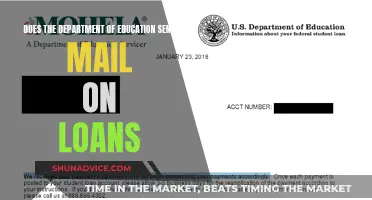
The FHA 203k loan is a type of mortgage that allows homebuyers to purchase, refinance, and renovate a property. It is designed for older homes that require renovations or upgrades, allowing buyers to bundle purchase and renovation costs into one mortgage. While the 203k loan does not require private mortgage insurance (PMI), it does require upfront guarantees, annual fees, and a mortgage insurance premium (MIP). The conditions for PMI removal in a 203k loan are often unclear, and it is recommended to consult the contract for specific removal requirements.
| Characteristics | Values |
|---|---|
| Minimum credit score required | 580 (some lenders require 620-640) |
| Down payment | 3.5% |
| Primary residence requirement | Homeowners must live in the home for at least 12 months before renting or selling |
| Closing time | 60 days or more |
| Adjustable-rate availability | Yes |
| Maximum loan amount | 110% of the property's proposed future value, or the home price plus repair costs, whichever is less |
| Private mortgage insurance (PMI) requirement | No, but mortgage insurance premium (MIP) is required |
| MIP down payment requirement | If the down payment is less than 10%, MIP is required for the life of the loan; if the down payment is 10% or more, MIP is required for 11 years |
What You'll Learn
- FHA 203k loans require a 3.5% down payment and a minimum credit score of 580
- PMI is private mortgage insurance, typically required for down payments of less than 20%
- MIP, not PMI, is required for FHA loans, including 203k loans
- PMI removal requests may be denied by lenders
- Lender-paid mortgage insurance (LPMI) is an option to avoid PMI, but it increases interest rates

FHA 203k loans require a 3.5% down payment and a minimum credit score of 580
FHA 203k loans are a type of mortgage product that allows borrowers to purchase and renovate a property with a single loan. These loans are designed for homeowners who plan to live in the home as their primary residence and are willing to undertake improvement projects. The eligibility criteria for a 203(k) loan typically include having a minimum credit score of 580, although some lenders may require a higher score of 620-640. A down payment of 3.5% of the combined purchase price and project cost is required, with certain assistance programs and gifts from family or non-profits being allowed.
The 203k loan is a subset of the broader FHA loan program, which is backed by the Federal Housing Administration and designed to make homeownership more accessible. FHA loans have more flexible eligibility guidelines and require a minimum down payment of 3.5% for borrowers with a credit score of 580 or higher. For borrowers with a credit score between 500 and 579, a minimum down payment of 10% is required.
In terms of keeping PMI (Private Mortgage Insurance), it is important to note that FHA 203k loans have MIP (Mortgage Insurance Premium) instead of PMI. While private mortgage insurance is not necessary for 203k loans, upfront guarantees and annual fees are still required. The upfront MIP is typically 1.75% of the loan amount, paid at closing, while the annual MIP can range from 0.15% to 0.75% of the loan amount, divided monthly. The annual MIP is determined by various factors, including the loan amount and down payment.
For borrowers who put down at least 10% at closing, MIPs can be removed after 11 years. However, if a lower down payment is made, MIPs are required for the life of the loan and cannot be removed unless the loan is refinanced through an equity-based conventional loan. It is important to carefully review the contract conditions, as they outline the requirements for PMI or MIP removal.
Texas Loan Prepayment: Are There Penalties?
You may want to see also

PMI is private mortgage insurance, typically required for down payments of less than 20%
Private mortgage insurance (PMI) is a type of insurance that may be required for conventional mortgage loan borrowers when they buy a home and make a down payment of less than 20% of the home’s purchase price. PMI insures the lender against loss caused by borrowers failing to make loan payments. It is important to note that PMI does not protect the borrower, and they can still lose their home through foreclosure if they fall behind on their mortgage payments.
PMI is typically required for down payments of less than 20%. However, there are ways to avoid paying PMI. One way is to make a down payment of 20% or higher. This eliminates the need for PMI from the start. Another way to avoid PMI is to take out a different type of loan, such as a Federal Housing Administration (FHA) loan or a U.S. Department of Agriculture (USDA) loan, which have their own equivalent forms of mortgage insurance. For example, FHA loans require mortgage insurance premiums (MIP), which operate differently from PMI.
In the context of a 203k loan, it is important to note that it is a type of FHA loan. As such, it requires MIP instead of PMI. With a 203k loan, if you put less than 10% down, MIP is required for the life of the loan and cannot be removed. If you put 10% or more down, MIP is required for 11 years and cannot be removed before that. Therefore, while PMI is typically required for down payments of less than 20%, there are exceptions and alternative loan options available, such as the 203k loan, which has its own set of rules regarding mortgage insurance.
It is worth mentioning that PMI can be removed or cancelled under certain circumstances. For instance, once a homeowner reaches 20% equity in their home, they can request to remove PMI. Additionally, some banks may permit PMI cancellation if the home's value increases sufficiently to lower the loan-to-value ratio (LTV) below 80%. Refinancing can also be a strategy to eliminate PMI, provided the new loan amount is 80% or less of the home's current value.
In summary, PMI is typically required for conventional loans with down payments of less than 20%. However, there are alternative loan options, such as FHA or USDA loans, which have their own forms of mortgage insurance. Additionally, there are strategies to remove or cancel PMI once it has been implemented.
Loans and Unemployment: Impact and Influence Explored
You may want to see also

MIP, not PMI, is required for FHA loans, including 203k loans
FHA 203k loans are a type of mortgage that bundles the purchase and renovation costs into one loan, giving homebuyers an option to buy older homes in need of work. They are a good option for homebuyers who want to purchase a property that won't qualify for traditional financing but is in need of updating.
With FHA 203k loans, you must pay what is called a mortgage insurance premium, or MIP. This is different from private mortgage insurance (PMI). While PMI is not necessary for FHA 203k loans, upfront guarantees and annual fees are still required. The upfront fee is 1.75% of the loan, and the annual fee is 0.35% of the outstanding principal. These fees pertain to any down payment. An upfront mortgage insurance premium (UFMIP) applies to all FHA mortgages. An annual mortgage insurance premium is then paid monthly once the home officially changes ownership.
Unlike the UFMIP, an annual MIP doesn’t have a set rate. Instead, it’s determined by several factors, including the loan amount and down payment. A borrower’s loan-to-value (LTV) ratio is also important. Borrowers putting down at least 10% or more at closing can cease MIPs after 11 years. For lower down payments, MIPs are required until the loan is forgiven or refinanced through an equity-based conventional loan.
It's important to note that if you have an FHA 203k loan and you're considering removing PMI, renovations completed under this loan might not be considered "substantial improvements". To stop paying PMI, you must meet the contract conditions, which usually include having cash to pay down the loan to 20% of its value and then doing the renovation. Lenders rarely accept renovation-based new values as equity towards the original loan.
Short Selling: TD Ameritrade's Stock Loan Policy Explained
You may want to see also

PMI removal requests may be denied by lenders
Additionally, it is worth noting that some lenders and servicers may have their own standards for PMI removal, and it is always advisable to refer to the original loan conditions, as these usually outline the conditions for PMI removal. In the case of an FHA 203k loan, upfront guarantees and annual fees are required, and an annual mortgage insurance premium is paid monthly once the home officially changes ownership. The annual MIP is determined by factors such as the loan amount and down payment, and borrowers who put down at least 10% or more at closing can cease MIPs after 11 years.
Ameritrade Share Loans: What Investors Need to Know
You may want to see also

Lender-paid mortgage insurance (LPMI) is an option to avoid PMI, but it increases interest rates
Lender-paid mortgage insurance (LPMI) is an alternative to private mortgage insurance (PMI) that enables homebuyers to purchase a property sooner. LPMI is normally available only on conventional loans. The idea is simple: the lender buys the mortgage insurance, and the homeowner accepts a higher interest rate on their mortgage loan. The monthly loan payment increases, but usually not as much as it would with PMI.
The interest rate increase compensates the lender for the higher risk of a lower down payment. The higher the interest rate on a mortgage, the more profit is available to the lender. For example, a lender may add a quarter of a percentage point to the loan rate, increasing it from 6% to 6.25%. A higher credit score and down payment will likely result in a lower LPMI interest rate.
LPMI cannot be canceled without refinancing. It will have to be paid over the life of the loan. The only way to lower payments is to refinance the loan. Once the homeowner reaches 20% equity, they can apply for refinancing to lower the interest rate.
While LPMI might be a good option for those who want a low monthly payment and don't mind a slightly higher interest rate, it may cost more than monthly PMI if you keep your loan for 30 years. This is because you can cancel monthly PMI when your loan reaches 80% loan-to-value (LTV), but you can't lower your LPMI interest rate without refinancing.
TaxAct's Refund Anticipation Loans: What You Need to Know
You may want to see also
Frequently asked questions
No, private mortgage insurance (PMI) is not necessary for 203k loans. However, upfront guarantees and annual fees are still required.
The upfront guarantee is 1.75% of the loan, while the annual fee is 0.35% of the outstanding principal.
You can avoid paying PMI by making a down payment of at least 20% of the home's value. Other options include lender-paid mortgage insurance or special first-time home buyer loans without PMI.







